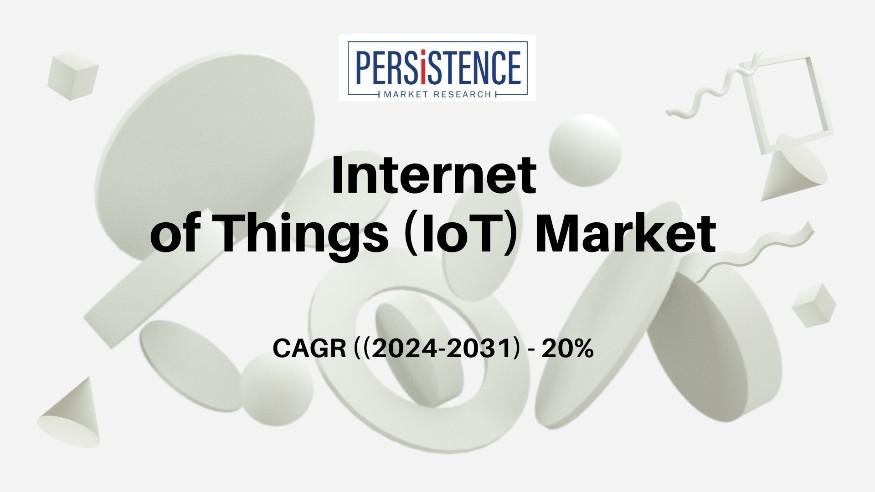What are the Major Marketing Strategies for Internet of Things (IoT)?
The Internet of Things (IoT) market is projected to grow significantly from US$ 217.5 billion in 2024 to approximately US$ 779.3 billion by 2031, driven by a robust CAGR of 20%. IoT involves interconnected devices and systems that communicate data without direct human intervention. Key components include IoT platforms, which hold a 21.6% market share, as well as IoT data transport, security, sensors, and analytics. The integration of AI and ML enhances the flexibility and efficiency of IoT systems, making data processes more dynamic.

Marketing strategies for the Internet of Things (IoT) must address the unique challenges and opportunities associated with connected technologies. Here’s a comprehensive look at major marketing strategies for IoT:
1. Education and Awareness
Content Marketing: Create and distribute valuable content that educates potential customers about IoT technologies, their benefits, and applications. This includes blog posts, whitepapers, case studies, and webinars.
Thought Leadership: Position your company as a thought leader in the IoT space by participating in industry conferences, publishing research, and contributing to discussions on emerging trends and technologies.
2. Demonstrations and Proof of Concept
Live Demos: Offer live demonstrations of IoT solutions to showcase their capabilities and benefits. This can be done through in-person events, virtual demos, or interactive online experiences.
Proof of Concept (PoC): Provide potential clients with a proof of concept to demonstrate how your IoT solution can solve their specific problems or improve their operations.
3. Targeted Solutions and Customization
Segmented Marketing: Tailor marketing efforts to specific industries or applications. Develop targeted campaigns that address the unique needs and pain points of different market segments, such as healthcare, manufacturing, or smart cities.
Customized Solutions: Highlight how your IoT solutions can be customized to meet the specific requirements of different industries or businesses. Showcase case studies and success stories that demonstrate the effectiveness of tailored solutions.
4. Strategic Partnerships and Alliances
Collaborations: Partner with other technology providers, system integrators, and industry experts to enhance your IoT offerings and reach a broader audience. Collaborations can also provide access to new markets and customer segments.
Ecosystem Development: Build an ecosystem around your IoT solutions by working with complementary technology providers, platforms, and services. This creates a comprehensive solution that adds value to customers and strengthens your market position.
5. Customer-Centric Approach
Customer Feedback: Engage with customers to understand their needs and challenges. Use their feedback to refine your IoT solutions and marketing strategies.
User Experience: Focus on delivering an exceptional user experience by ensuring that your IoT solutions are user-friendly, reliable, and provide clear value. Highlight positive user experiences in your marketing materials.
6. Demonstrating ROI and Value
Case Studies: Use real-world case studies to illustrate the return on investment (ROI) and benefits of your IoT solutions. Highlight measurable outcomes such as cost savings, efficiency improvements, and increased productivity.
Value Propositions: Clearly communicate the value proposition of your IoT solutions, including how they address specific problems, deliver tangible benefits, and differentiate from competitors.
7. Digital Marketing and Online Presence
Search Engine Optimization (SEO): Optimize your website and content for search engines to increase visibility and attract potential customers searching for IoT solutions.
Social Media: Utilize social media platforms to share content, engage with your audience, and promote your IoT solutions. Platforms like LinkedIn, Twitter, and industry-specific forums are effective for reaching professionals and decision-makers.
8. Lead Generation and Nurturing
Lead Magnets: Offer valuable resources such as eBooks, whitepapers, and industry reports in exchange for contact information. This helps in generating leads and building a database of potential customers.
Email Campaigns: Implement email marketing campaigns to nurture leads, provide updates, and share valuable content. Segment your email list based on interests and industry to deliver targeted messages.
9. Industry Events and Trade Shows
Exhibitions: Participate in industry events, trade shows, and conferences to showcase your IoT solutions, network with potential clients, and gain visibility in the market.
Sponsorships: Consider sponsoring relevant industry events to increase brand recognition and demonstrate your commitment to the IoT sector.
10. Innovation and Product Development
Continuous Improvement: Regularly update and enhance your IoT solutions based on market trends, customer feedback, and technological advancements. Highlight these innovations in your marketing efforts.
Early Access Programs: Offer early access to new features or products to select customers. Use their feedback to refine the product and generate positive word-of-mouth.
11. Regulatory Compliance and Security
Transparency: Clearly communicate how your IoT solutions adhere to industry regulations and security standards. Address concerns about data privacy and security to build trust with potential customers.
Certifications: Highlight any relevant certifications or compliance with industry standards to reassure customers of the reliability and security of your IoT solutions.
12. Analytics and Performance Measurement
Performance Tracking: Use analytics tools to track the performance of your marketing campaigns, measure ROI, and identify areas for improvement. Regularly review and adjust strategies based on data-driven insights.
Customer Insights: Analyze customer behavior and preferences to refine your marketing strategies and better align with market demands.
Conclusion
Marketing IoT solutions requires a strategic approach that focuses on education, customization, partnerships, and demonstrating value. By addressing the unique needs of different industries, leveraging strategic alliances, and utilizing digital marketing techniques, companies can effectively reach their target audiences and drive growth in the IoT market.
